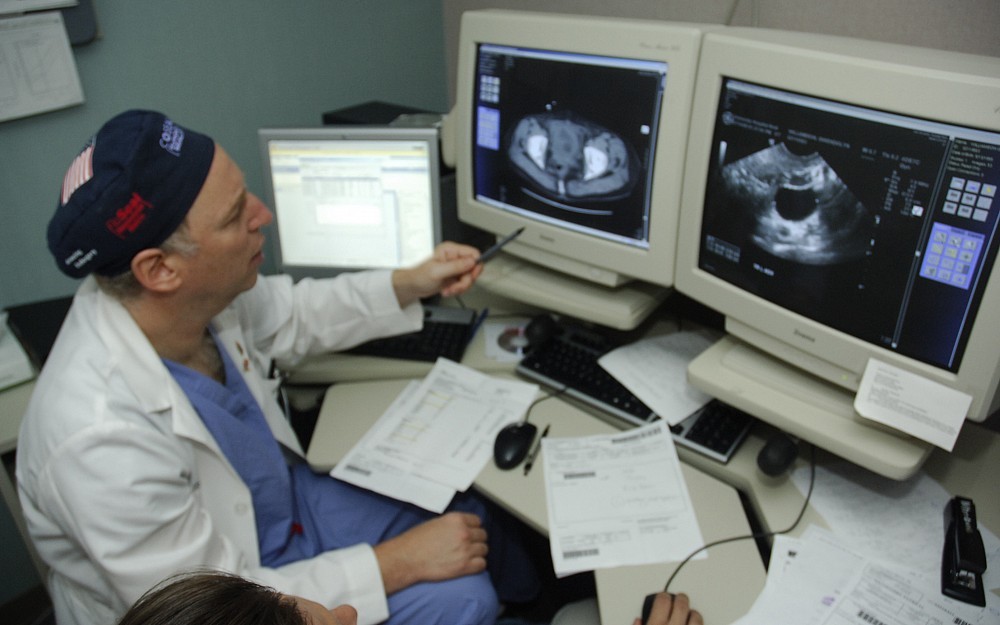
UC HEALTH LINE: Minimally Invasive Technique Shrinks Uterine Fibroids Without Surgery
CINCINNATIWomen who suffer from painful, heavy menstrual cycles due to uterine fibroids have a new, noninvasive treatment option that allows them to avoid the operating room completely.
University of Cincinnati (UC) interventional radiologists say the procedure, known as uterine artery embolization, is a safe and effective alternative to surgery for certain women who have uterine fibroids.
Embolization is most appropriate for premenopausal women facing fibroid complications that affect their quality of life and who dont want to become pregnant again, says Darryl Zuckerman, MD, an associate professor and interventional radiologist at UC.
Uterine fibroids are benign (noncancerous) tumors that form in the muscular wall of the uterus, the female organ where fetuses grow and develop. Fibroids vary in sizefrom as small as a golf ball to as large as a cantaloupebut nearly all result in abnormally heavy menstrual bleeding and pelvic pain when left untreated.
Depending on their size and the severity of symptoms, the growths are traditionally treated by a gynecological surgeon, who removes the uterus (hysterectomy) or just the visible fibroids (myomectomy).
The new noninvasive uterine artery embolization technique, however, doesnt require open surgery and can be performed by a specially trained interventional radiologist.
The problem with conventional surgery is that some women experience additional health complications, explains Zuckerman. Uterine artery embolization, on the other hand, yields nearly the same success rates as hysterectomy, but with the benefit of a faster recovery and no major incisions into the body.
According to the Society of Interventional Radiology, up to 40 percent of American women over 35 have uterine fibroids that require some type of medical intervention. In addition, one-third of the 600,000 hysterectomies performed each year are due to fibroids.
Clinical research has shown that up to two-thirds of hysterectomies done in the United States could have been avoided, says Zuckerman. Not all fibroids require treatment, but of those that do, not all can be treated with this minimally invasive technique.
Whats important, he adds, is that the problem is accurately diagnosed and treated in a timely manner.
Fibroids are evaluated using ultrasound or magnetic resonance imaging (MRI) tests to determine the size, location and severity of the growth.
Prior to the uterine artery embolization procedure, the patient is moved into a hospital procedure room and given a mild anesthetic so she is drowsy but still conscious during treatment. The interventional radiologist then makes a tiny nick (2 mm) in the groin to gain access to the femoral artery. Using moving X-ray images (fluoroscopy) as a visual guide, the physician inserts a slender, flexible tube (catheter) and guides it into the uterine artery, which supplies blood to the fibroid.
Minuscule plastic particlesno larger than a grain of sandare then injected via the catheter into the uterine artery, where they block and cut off the fibroids blood supply, causing it to shrink and eventually die.
The procedure takes about an hour, and the patient usually goes home the next day. Many women can resume light activities within a few days and are back at work within a week.
About 90 percent of the women who choose this procedure experience a significantif not totalrelief from heavy bleeding, and about 85 percent have no more pain, says Zuckerman.
UCs interventional radiology team offers the uterine artery embolization procedure at University Hospital in Clifton. They perform up to 30 uterine artery embolization procedures a year.
For more information on uterine fibroids, visit www.netwellness.org, a collaborative health-information Web site staffed by Ohio physicians, nurses and allied health professionals, or call (513) 584-0792 to schedule an appointment with Zuckerman.
Tags
Related Stories
UC, UC Health see frontline student training as workforce...
May 6, 2025
Amid ongoing challenges across the health care workforce, including burnout and shortages, the University of Cincinnati is working to tackle this issue through a program that embeds students in clinical settings.
University of Cincinnati College of Medicine celebrates Class of...
May 6, 2025
The University of Cincinnati College of Medicine celebrated the Class of 2025 at its annual Honors Day, recognizing graduates' achievements, resilience through the COVID-19 pandemic and commitment to compassionate, innovative care. Highlights included a 100% Step 2 pass rate, top residency matches and powerful moments of reflection and recognition.
Growing heart failure epidemic calls for prioritizing primary...
May 5, 2025
A rapidly growing heart failure epidemic calls for prioritizing primary prevention, according to a new scientific statement from the American Heart Association published in Circulation in April. The statement reviews the current evidence for predicting heart failure risk and offers risk-based strategies for heart failure prevention.
